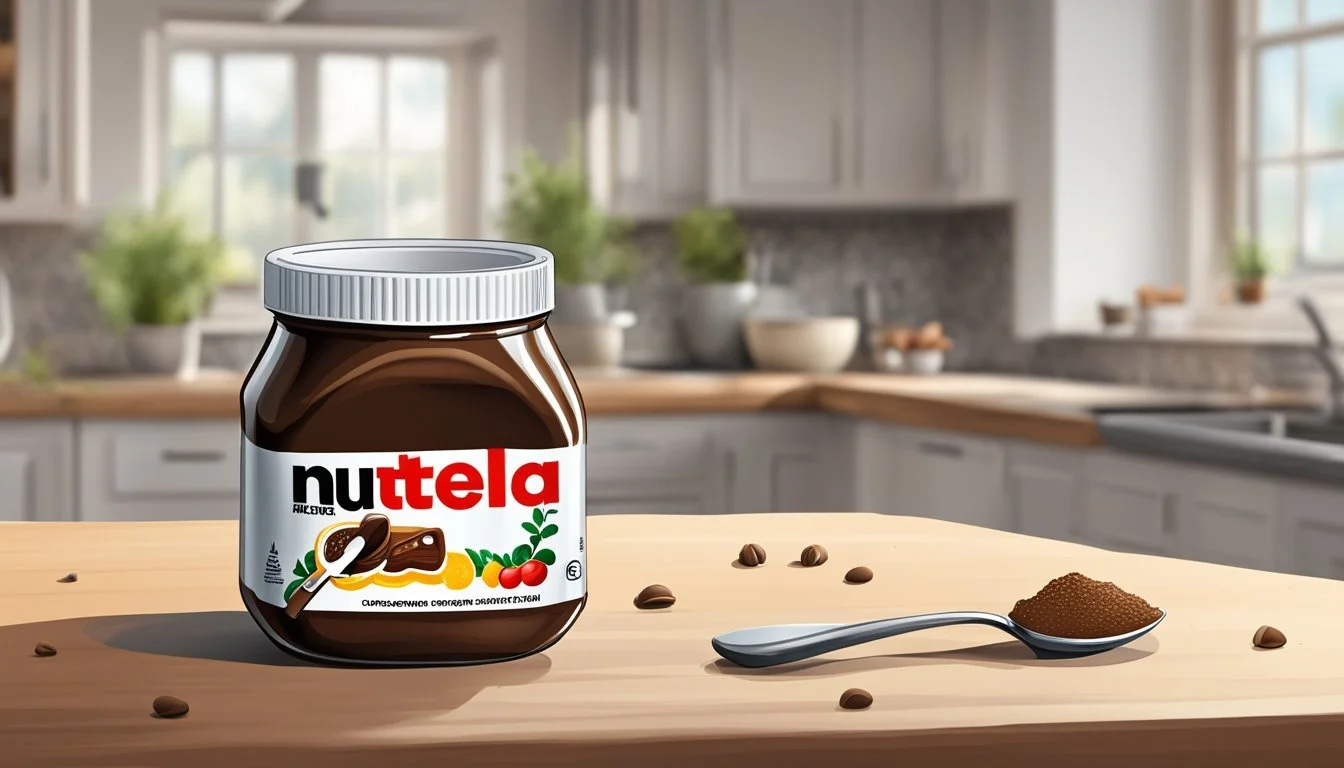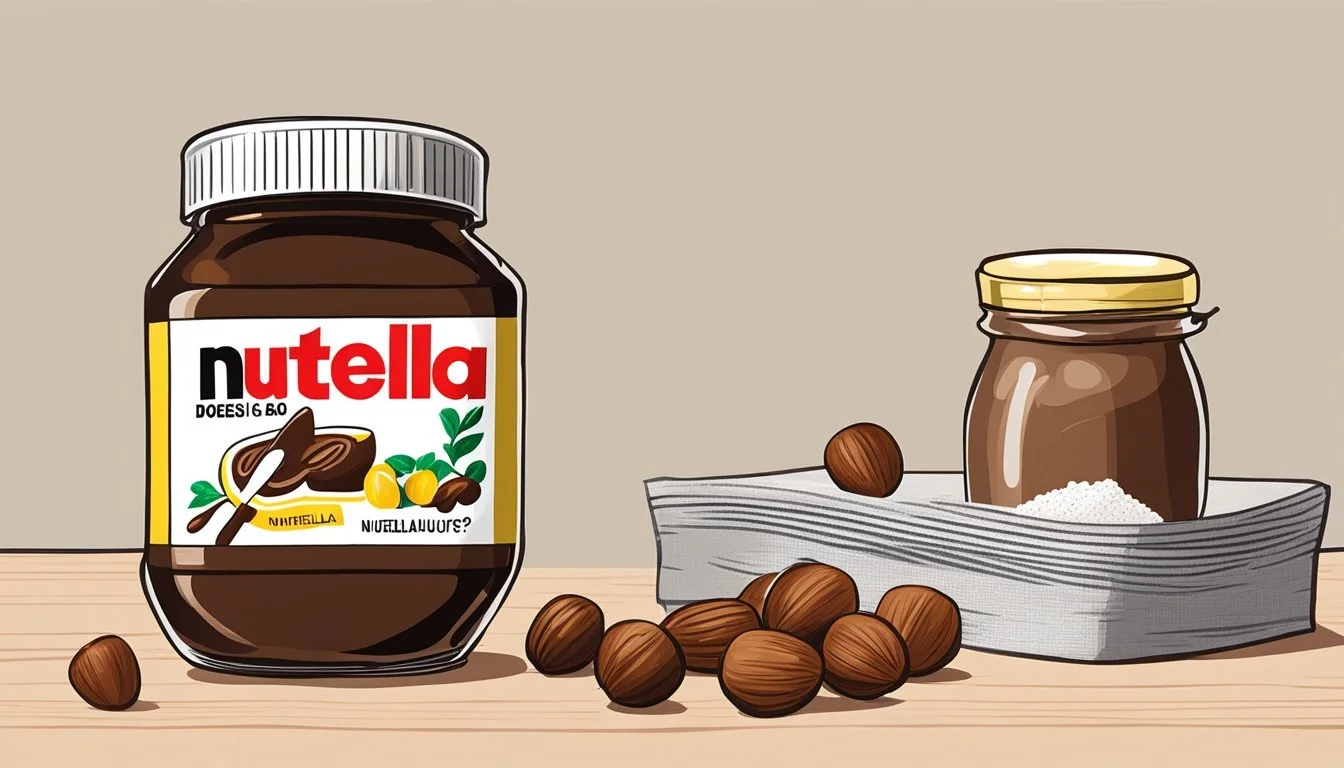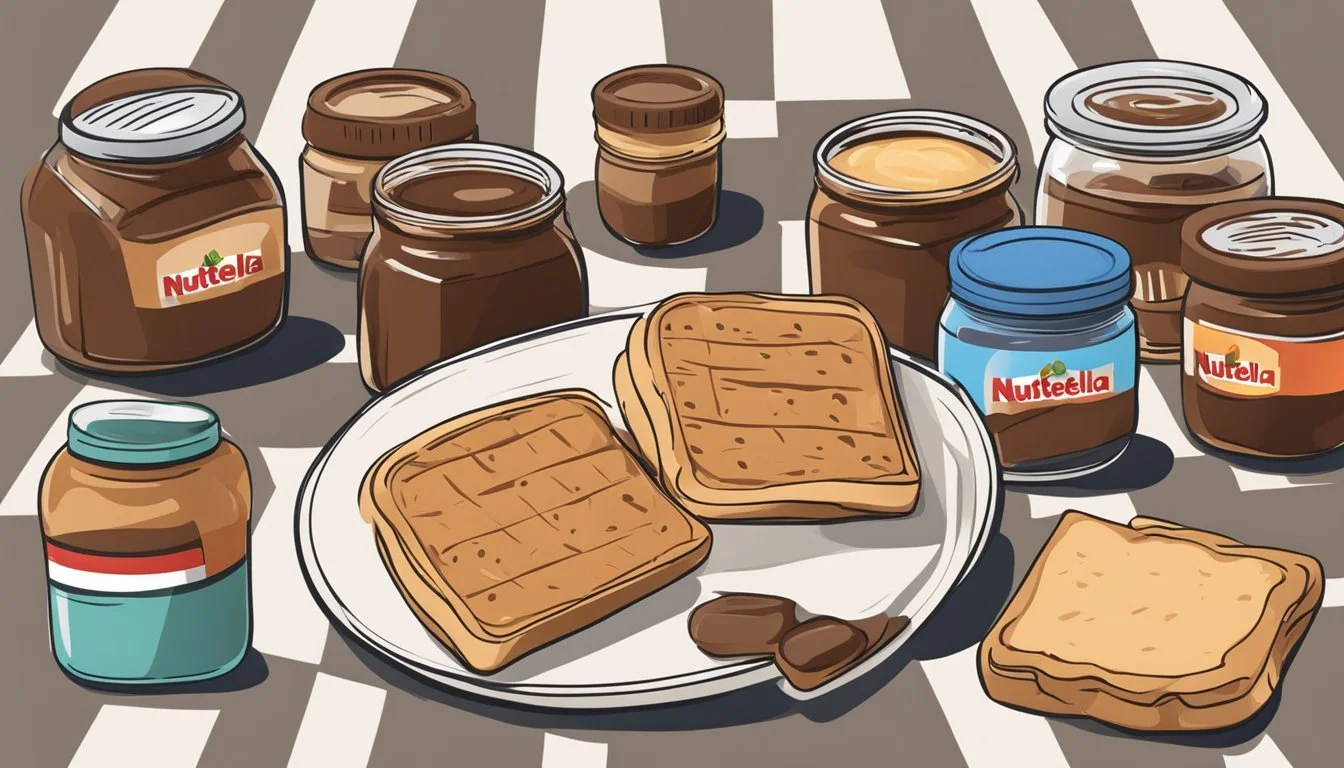Does Nutella Go Bad?
Understanding Shelf Life and Spoilage Signs
Nutella, a popular hazelnut spread created by Ferrero, is a staple in many households around the world. Its combination of hazelnuts, cocoa, skim milk, and sugar gives it a unique flavor that is favored for use in a variety of desserts and snacks. However, like most food products, Nutella can go bad. The product’s shelf life is influenced by several factors, including its high sugar content which acts as a preservative.
Although Nutella contains ingredients that generally have long shelf lives, the inclusion of milk and hazelnuts can influence how long it remains fresh. According to the manufacturer, Nutella can remain in good condition for up to 12 months after being opened, as long as it is stored properly. In terms of unopened jars, they are typically safe to consume for an extended period, often several months past the best-by date indicated on the packaging.
Consumers are advised to observe the spread for any changes in smell, texture, or taste, as these are signs that the Nutella may have gone bad. Quality and freshness may begin to decline over time, so even if Nutella is safe to eat beyond the best-by date, its flavor might not be as intended. Proper storage, such as keeping the jar tightly closed and storing it in a cool, dry place, will help to maintain the product's optimal taste and consistency.
Understanding Nutella and Its Ingredients
Before delving into the Nutella jar, it is imperative to understand what this spread is composed of. The prominent ingredients are hazelnuts and cocoa, enhanced with sugar, palm oil, and milk, which all play specific roles in Nutella's taste, texture, and shelf life.
Hazelnut and Cocoa Composition
Nutella is characterized by its significant proportion of hazelnuts and cocoa. The precise combination of these ingredients contributes to the distinct flavor for which Nutella is renowned. Typically, the spread contains about 13% of hazelnuts and leaner amounts of cocoa. Hazelnuts are the primary source of flavor, while cocoa adds a rich chocolatey undertone, synergistically creating Nutella's signature taste.
Additives: Sugar, Oil, and Milk
In addition to hazelnuts and cocoa, Nutella contains sugar, palm oil, and skim milk, which enhance its spreadable texture and sweetness:
Sugar: A key ingredient for sweetness, contributing to its indulgent taste.
Palm Oil: This oil is responsible for the creamy and smooth texture, making the spread easily spreadable even at room temperature.
Milk: It generally contains skim milk powder, which adds a subtle hint of creaminess and enriches its texture and flavor.
These ingredients, particularly sugar and palm oil, act as preservatives to maintain the freshness and extend the shelf life of Nutella, allowing it to remain in good condition for an extended period post-manufacturing.
Shelf Life and Expiration
Nutella's shelf life is an important consideration for both freshness and food safety. Consumers should understand the implications of the best-by date and how the product's quality changes after the jar is opened.
Deciphering the Best-By Date
The best-by date on a Nutella jar serves as an indicator of the period during which the product is expected to be at its peak quality. It is not an expiration date. An unopened jar of Nutella generally maintains its quality for:
Up to six months past the best-by date.
It's important to note, however, that the best-by date assumes that the jar has been stored properly, away from direct sunlight and at a stable, cool temperature.
Quality After Opening
Once a Nutella jar is opened, the countdown on freshness begins. Consumers can expect the hazelnut spread to retain its quality for:
Up to 12 months in a properly sealed jar.
During this period, it's crucial to keep the jar tightly closed and store it in a cool, dry place to maintain its quality. After six months, despite still being safe to eat, the product may begin to experience a decline in its rich flavor and creamy texture. Users should lookout for any signs of spoilage such as changes in smell, taste, or appearance and discard the product if any such signs are present.
Signs Nutella Has Gone Bad
When Nutella goes bad, it's important to be aware of the signs of spoilage, which primarily include changes in appearance, smell, and texture. Consuming spoiled Nutella can be unsafe, so recognizing these signs is crucial for health and safety.
Identifying Mold and Odor
One should inspect Nutella for any visible mold growth, which may appear as fuzzy spots of various colors. The presence of mold indicates that the Nutella is no longer safe to eat. Additionally, a rancid or odd odor is a clear sign of spoilage. Nutella should have a sweet, nutty aroma; if it smells sour or unpleasant, it should be discarded.
Changes in Texture and Separation of Oil
A fresh jar of Nutella has a smooth and creamy texture. Over time, the texture may change; it can become dry and hard, or it might exhibit oil separation, where the oil rises to the top of the jar. While minor oil separation can occur naturally and can be stirred back in, excessive separation and a noticeably altered texture suggest that the Nutella is going bad.
Proper Storage Techniques
Storing Nutella correctly extends its shelf life and maintains its flavor and consistency. It is important to maintain proper temperature, choose the right storage location, and consider different methods like refrigerating or freezing when necessary.
Ideal Temperature and Location
Nutella should be kept in a cool and dark place to preserve its quality. The ideal temperature for storage is at or just below room temperature—around 68°F (20°C). Exposing Nutella to direct sunlight or heat can cause the oils to separate, affecting its texture and flavor. A pantry or a kitchen cupboard away from the stove or oven is typically suitable.
Refrigerating vs. Pantry Storage
When it comes to refrigerating Nutella, opinions vary. Generally, it is not necessary to refrigerate Nutella as long as it is kept in a cool environment. Refrigeration can lead to a firmer texture, which can make it difficult to spread. If refrigerated, one should ensure the jar is sealed tightly to prevent moisture from affecting the product. If one prefers a softer consistency, pantry storage is recommended.
Freezing Nutella: Pros and Cons
Freezing Nutella can be a bit controversial. While it won't spoil if frozen, freezing can alter its consistency, making it grainy or causing separation of the oils upon thawing. Pros of freezing include extending its shelf life beyond the pantry or refrigerator storage limits. The cons are potential changes in texture, which may not be desirable. If one chooses to freeze Nutella, it is crucial to store it in an airtight container.
Safety and Consumption
When considering the consumption of Nutella, the primary factors to examine are the implications of eating the product past its labeled expiration date and understanding the risks associated with spoilage.
Eating Expired Nutella
Expiration dates on food products like Nutella generally indicate the timeframe within which the manufacturer can guarantee optimal freshness and taste. Nutella, specifically, can last beyond its expiration date, often up to 12 additional months if unopened and stored properly. Once opened, it is recommended to consume the spread within 6 months to experience its best quality, though it may still be safe to consume for up to a year under correct storage conditions.
Safe Storage: A cool, dry place to maintain freshness
Freshness Window: 6 months after opening for optimal taste
Risks of Spoilage and Bacterial Growth
Although Nutella's high sugar and fat content act as preservatives, spoilage is still possible, especially when stored improperly. Indicators of spoilage include an off smell, change in texture, or visible mold. Consuming spoiled Nutella can pose health risks due to bacterial growth, with potential for foodborne illnesses.
Spoilage Indicators: Off smell, altered texture, visible mold
Storage Importance: Proper storage mitigates bacterial growth and spoilage
Comparing Nutella with Other Spreads
In the realm of spreads, Nutella stands out for its unique chocolate-hazelnut flavor, but it's useful to examine how its shelf life compares to other popular spreads like peanut butter and the brand's own line of products such as Ferrero Rocher.
Nutella vs. Peanut Butter Shelf Life
Peanut butter, a staple sandwich spread, boasts a relatively long shelf life due to its low moisture content and high fat content, which helps it resist spoilage. Typically, an opened jar of peanut butter can remain fresh from 3 to 6 months when stored in a pantry and can extend to 6 to 9 months if refrigerated. In contrast, Nutella, after opening, is generally recommended to be consumed within 12 months to ensure optimal flavor and texture.
Peanut Butter:
Pantry: 3-6 months
Refrigerated: 6-9 months
Nutella:
Pantry: Up to 12 months
Nutella and Ferrero Rocher
Nutella and Ferrero Rocher chocolates are both produced by Ferrero, but their shelf stability varies considerably due to differences in their composition. Ferrero Rocher contains wafers and a whole hazelnut inside the chocolate, components that may affect its freshness period. It's typically recommended that Ferrero Rocher chocolates be consumed by the date indicated on the package for peak quality. Nutella, which lacks the wafers and whole hazelnuts, offers a longer shelf life as a spread. Both products should be stored in cool, dry conditions to maintain their flavor and quality.
Maintaining Nutella’s Quality for Use
Maintaining the quality of Nutella ensures that the product remains safe for consumption and retains its intended flavor profile. Proper hygiene practices and storage are essential.
Hygiene and Utensil Use
To guarantee the freshness of Nutella, cooks should always use clean utensils when handling the spread. This prevents contamination and inhibits mold growth, which can occur when food particles are introduced into the jar. It's pivotal that they avoid using the same utensil for multiple ingredients to prevent cross-contamination.
Storing Nutella in Piping Bags and Jars
When storing Nutella for later use, whether in piping bags or jars, it's crucial to ensure the containers are clean and dry. If using a piping bag for a recipe, one should remove only what's necessary and immediately store the remainder in a glass jar with a tightly secured lid. A properly sealed jar protects the Nutella from air exposure, which can cause it to become grainy over time. If they're using piping bags, they should be sure to store them in a cool, dry place and avoid any unnecessary warming which may degrade the Nutella’s texture and taste.
Frequently Asked Questions
In addressing the longevity and preservation of Nutella, consumers often have queries regarding its shelf life, the best storage practices, and how to determine its ongoing quality. Here, those questions are succinctly answered to ensure clarity and proper use of this favorite spread.
Shelf Life Queries
Does Nutella expire?
Nutella does have a best before date, typically indicating the time it maintains its best quality. For unopened jars, they're good to consume up to six months past this date. Once opened, Nutella can last for up to 12 months if stored correctly, though the flavor is optimal if consumed within six months after opening.
How can one tell if Nutella has gone bad?
One should check for changes in color, texture, or an odd smell. If Nutella exhibits these signs or shows any evidence of mold, it should not be consumed.
Common Storage Concerns
What is the proper way to store Nutella?
Nutella should be kept in a cool, dry place, away from heat and light. The pantry is typically ideal. Do not store Nutella in the refrigerator as it can cause the spread to harden and become difficult to use.
Does exposure to heat affect Nutella?
Heat can affect the consistency and flavor of Nutella. It's advisable to avoid leaving Nutella in hot conditions to prevent it from becoming too runny and possibly causing separation of ingredients.
Addressing Taste and Quality Issues
Can the flavor of Nutella degrade over time?
Yes, the quality and taste may begin to deteriorate after six months of opening, even if kept in proper conditions.
Is it safe to eat Nutella after the best before date?
Consuming Nutella after the best before date can be safe if the jar remains unopened and stored properly. However, it's important to always inspect for spoilage signs before consumption as a precaution.







